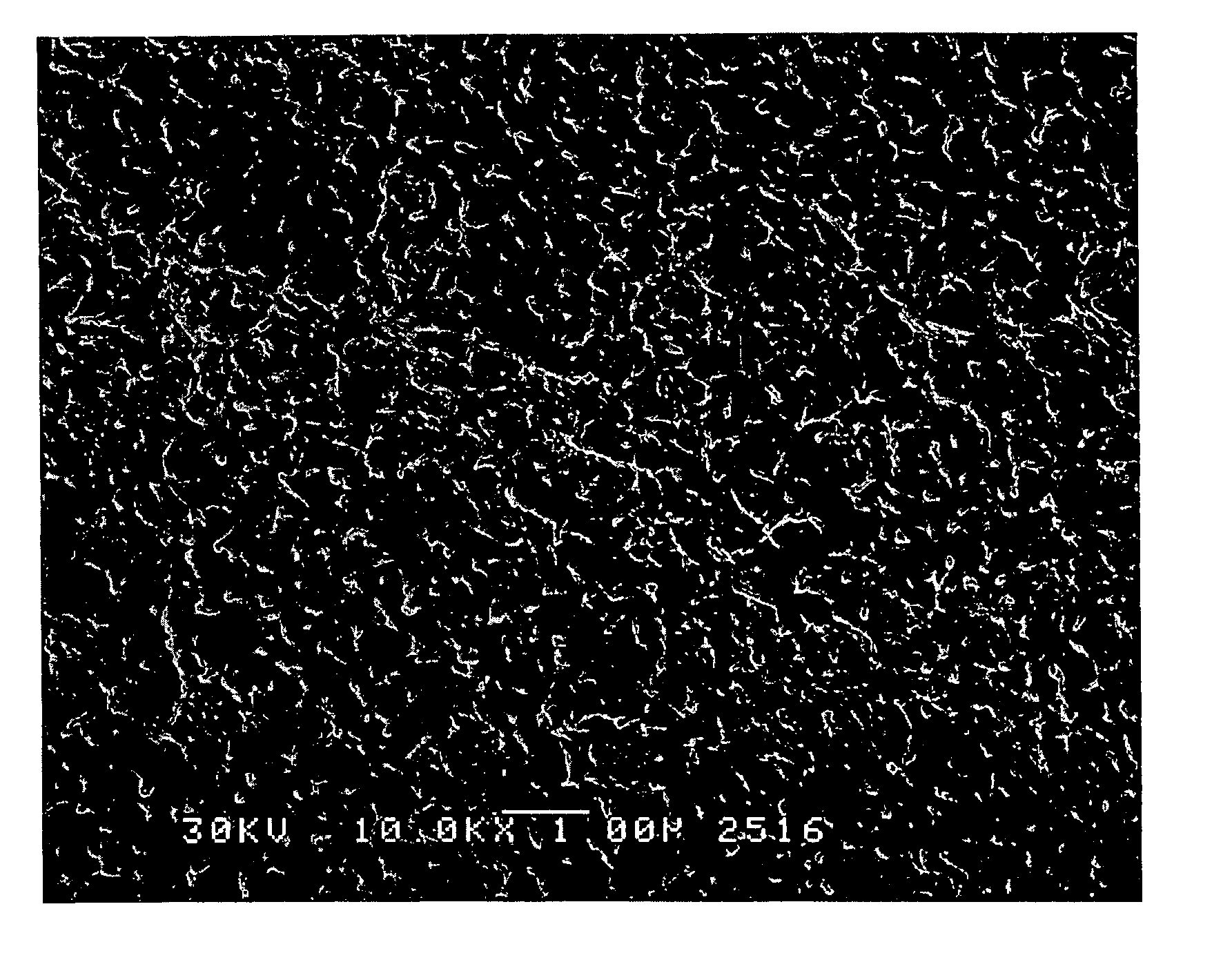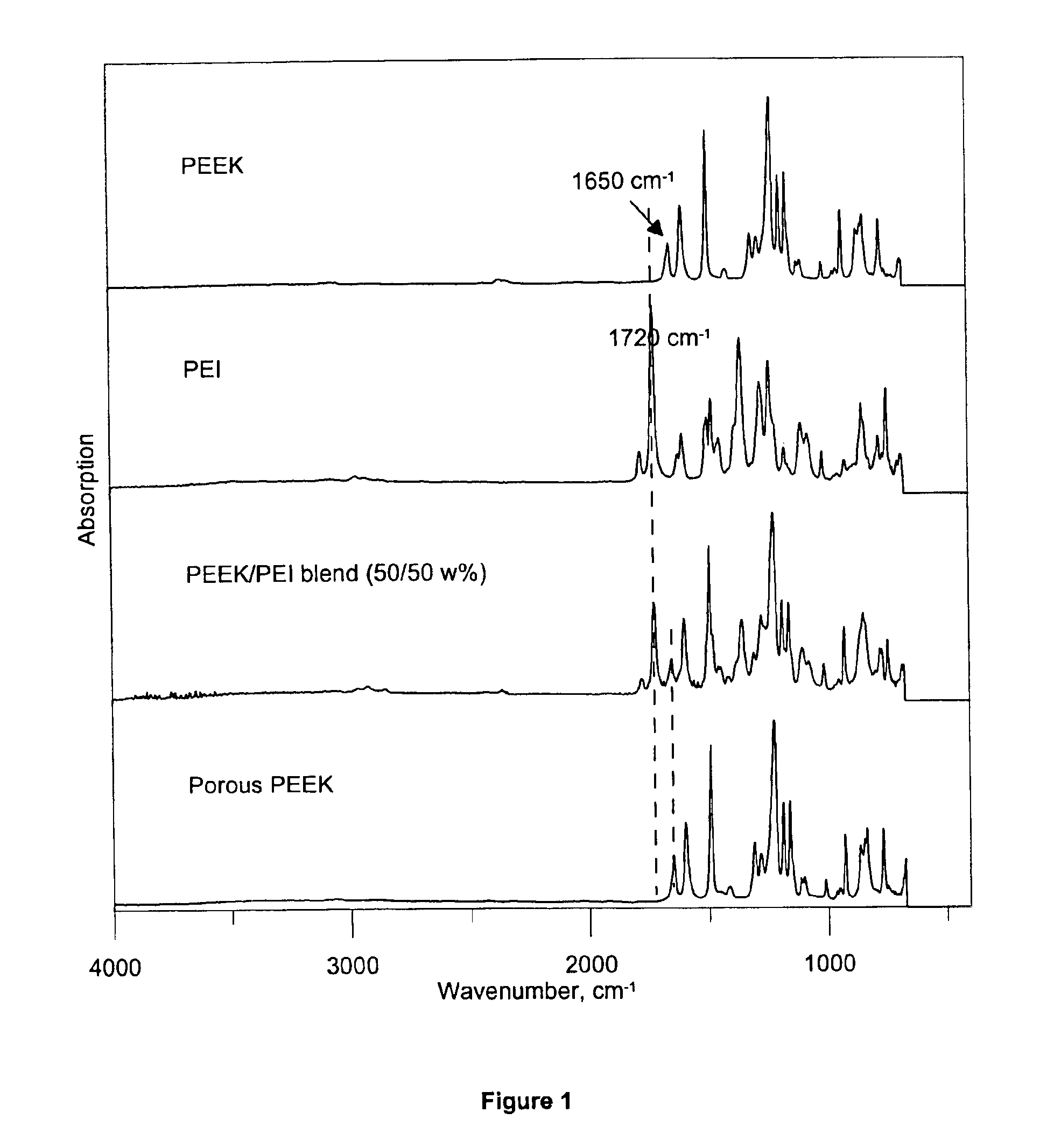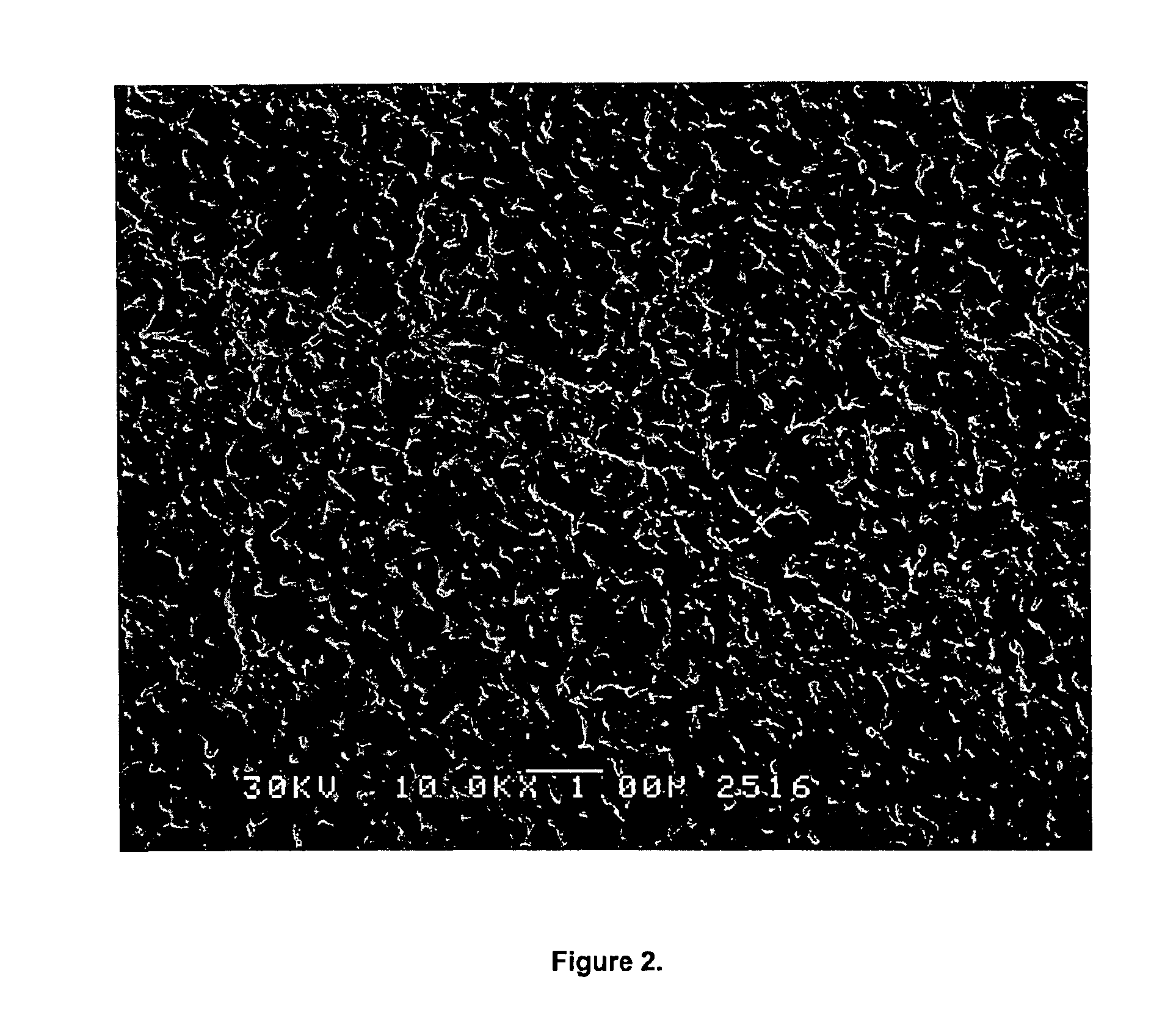Porous poly(aryl ether ketone) membranes, processes for their preparation and use thereof
a technology of porous polymer and aryl ether, which is applied in the field of process for the preparation of porous polymer (aryl ether ketone), can solve the problems of limited chemical, solvent and thermal resistance, limited application of paek polymers in membrane fabrication, and large and frequently non-uniform pore size distribution, etc., to achieve simple and convenient use, cost-effective
- Summary
- Abstract
- Description
- Claims
- Application Information
AI Technical Summary
Benefits of technology
Problems solved by technology
Method used
Image
Examples
example 1
[0070]50 g of poly(aryl ether ketone) (Victrex®), 50 g of poly(ether imide) (Ultem®) and 500 g of tetramethylene sulfone were charged into a 3 L reaction kettle equipped with a nitrogen inlet and a mechanical stirrer. The mixture was heated to 290° C. and a homogeneous, transparent, amber colored solution was formed. The mixture was then poured into a large amounts of water to precipitate the blend of polymers. The solidified polymer blend powder was further washed with 4 L of methanol and dried under vacuum at 150° C. for 24 hour.
[0071]A PEEK / PEI (50:50, by weight) film was obtained by compression molding of the aforementioned blend powder at ca. 350° C. followed by slowly cooling the film to room temperature.
[0072]A porous PEEK membrane was obtained by treating the PEEK / PEI film in monoethanolamine maintained at 80° C. for 8 hours. The film became opaque after the PEI component was removed. The porous film was then washed with methanol, and dried under vacuum at 50° C. overnight. ...
example 2
[0074]30 g of poly(aryl ether ketone) (Victrex®), 70 g of poly(ether imide) (Ultem®) and 500 g of tetramethylene sulfone were charged into a 3 L reaction kettle equipped with a nitrogen inlet and a mechanical stirrer. The mixture was heated to 290° C. and a homogeneous, transparent, amber colored solution was formed. The mixture was then poured into a large amounts of water to precipitate the blend of polymers. The solidified polymer blend powder was further washed with 4 L of methanol and dried under vacuum at 150° C. for 24 hours.
[0075]A PEEK / PEI (30:70, by weight) film was obtained by compression molding of the aforementioned blend powder at ca. 350° C. followed by slowly cooling the film to room temperature.
[0076]A porous PEEK membrane was obtained by treating the PEEK / PEI film with the monoethanolamine maintained at 80° C. for 8 hours. The film became opaque after the PEI component was removed. The porous film was then washed with methanol, and dried under vacuum at 50° C. over...
PUM
| Property | Measurement | Unit |
|---|---|---|
| Temperature | aaaaa | aaaaa |
| Temperature | aaaaa | aaaaa |
| Fraction | aaaaa | aaaaa |
Abstract
Description
Claims
Application Information
 Login to View More
Login to View More - R&D
- Intellectual Property
- Life Sciences
- Materials
- Tech Scout
- Unparalleled Data Quality
- Higher Quality Content
- 60% Fewer Hallucinations
Browse by: Latest US Patents, China's latest patents, Technical Efficacy Thesaurus, Application Domain, Technology Topic, Popular Technical Reports.
© 2025 PatSnap. All rights reserved.Legal|Privacy policy|Modern Slavery Act Transparency Statement|Sitemap|About US| Contact US: help@patsnap.com



